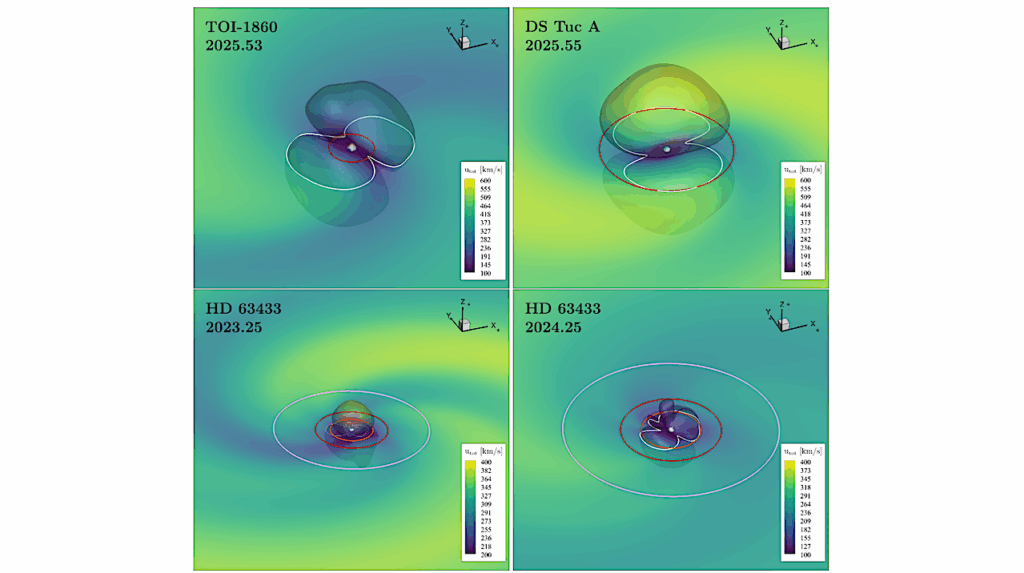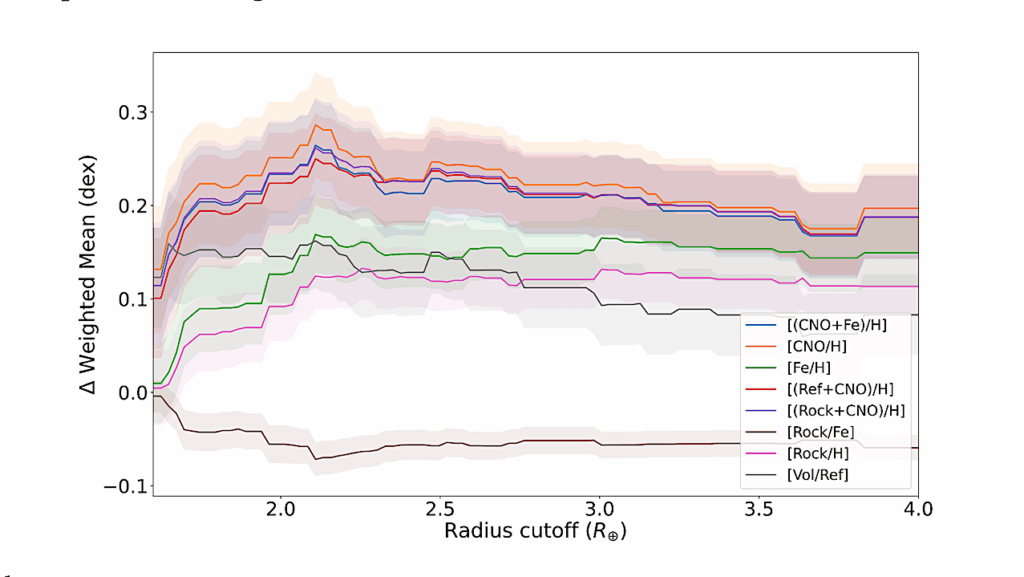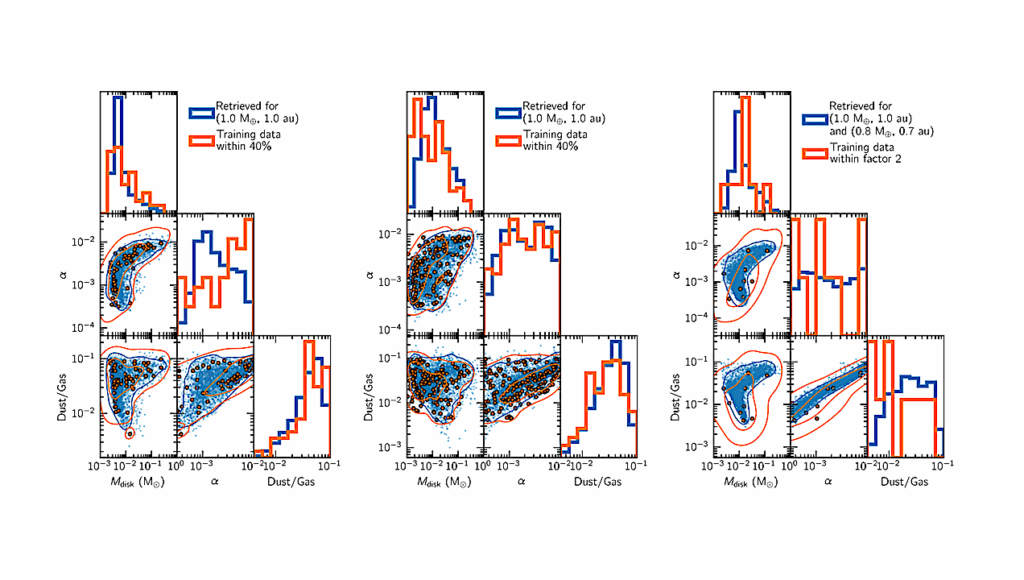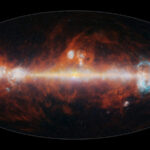Now Reading: Ocean Tides On Asynchronously Rotating Planets Orbiting Low-mass Stars
-
01
Ocean Tides On Asynchronously Rotating Planets Orbiting Low-mass Stars
Ocean Tides On Asynchronously Rotating Planets Orbiting Low-mass Stars
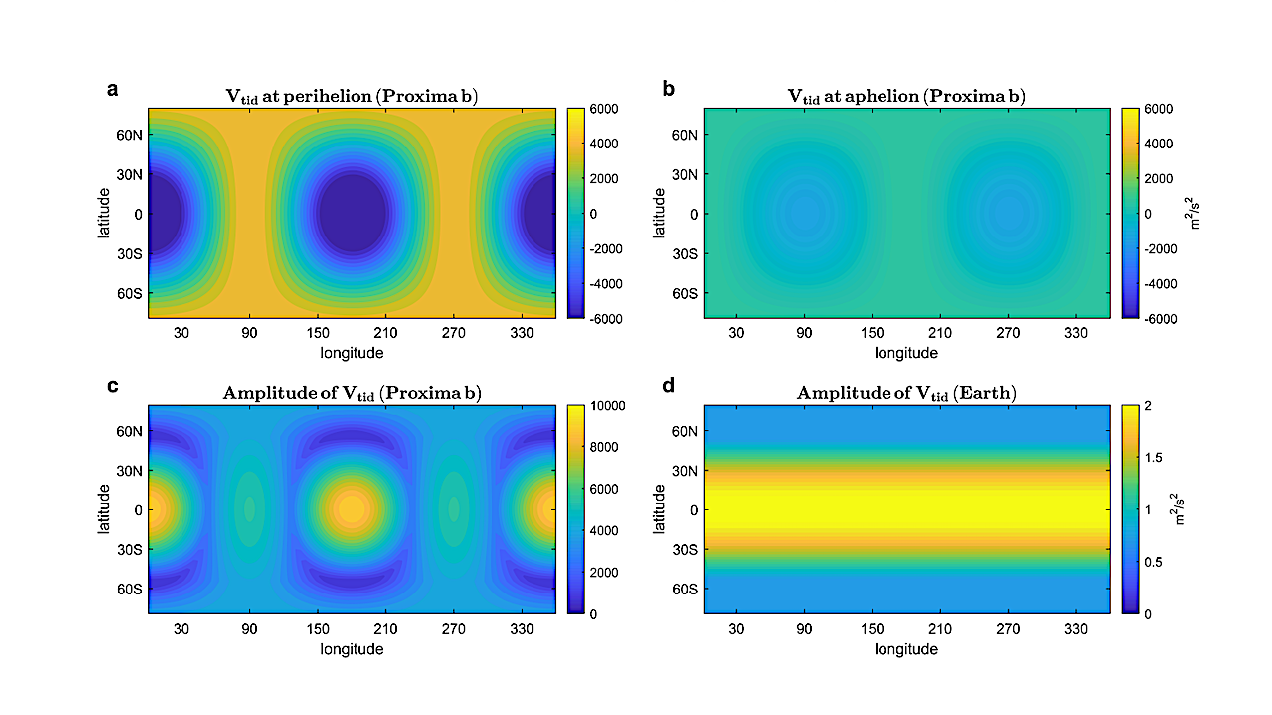
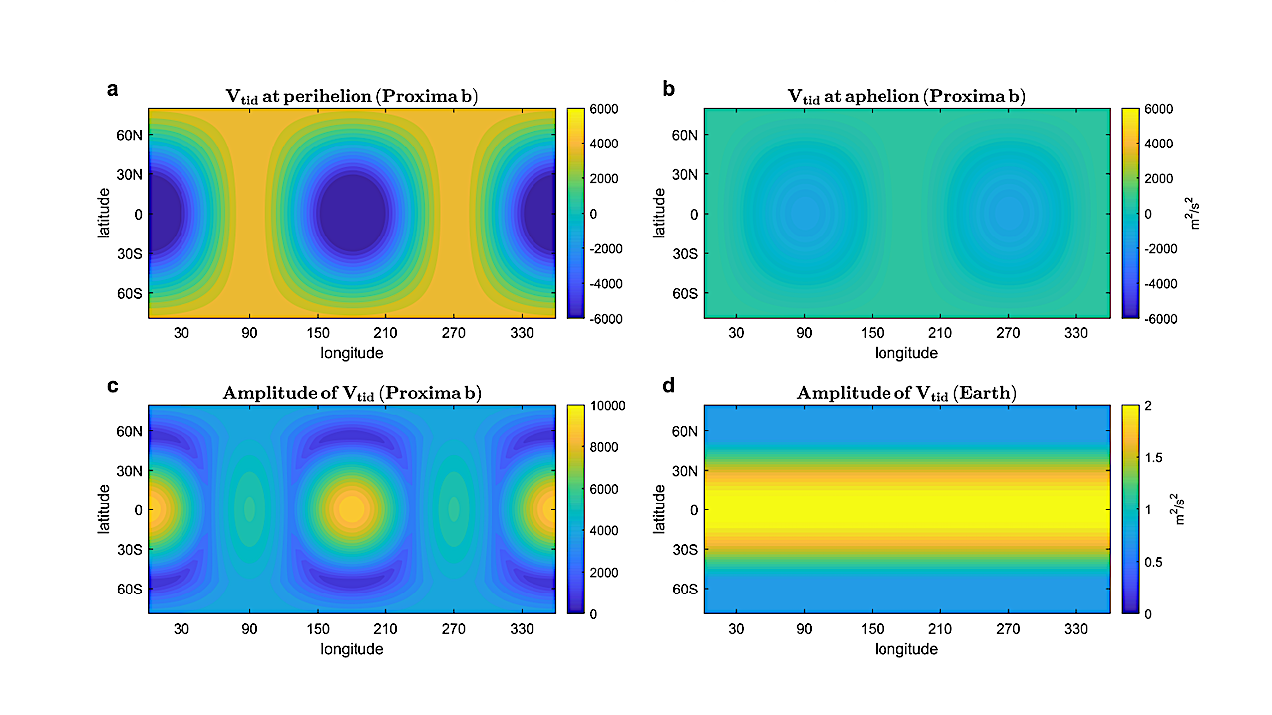
The instantaneous Vtid on Proxima b at periastron (a) and at apastron (b), and the orbital-mean amplitude of tidal potential (Vtid) on Proxima b (c) and on Earth (d). — astro-ph.EP
Planets in the liquid-water habitable zone of low-mass stars experience large tidal forces, 103 to 104 times those on Earth, due to the small distance between the habitable zone and the host stars.
Therefore, interior solid tides, ocean tides and atmospheric tides on these planets could be much stronger than that on Earth, but rare work has been done to explicitly simulate the ocean tides.
Here, for the first time, we perform global ocean tide simulations and show that ocean tides on asynchronously rotating planets with large eccentricities can reach (1000)m in height and (10)ms−1 in flow speed. Interactions between tide and bottom topography can induce large energy dissipation, ∼(100)Wm−2 in global mean.
This tidal energy dissipation can strongly accelerate orbital evolution by 1-2 orders of magnitude. However, for planets with small eccentricities, the ocean tides are much weaker but still comparable to that on modern Earth.
Our results suggest that ocean tides on eccentric planets orbiting low-mass stars are orders of magnitude more powerful than those on Earth and can dramatically influence surface geography and orbital evolution.
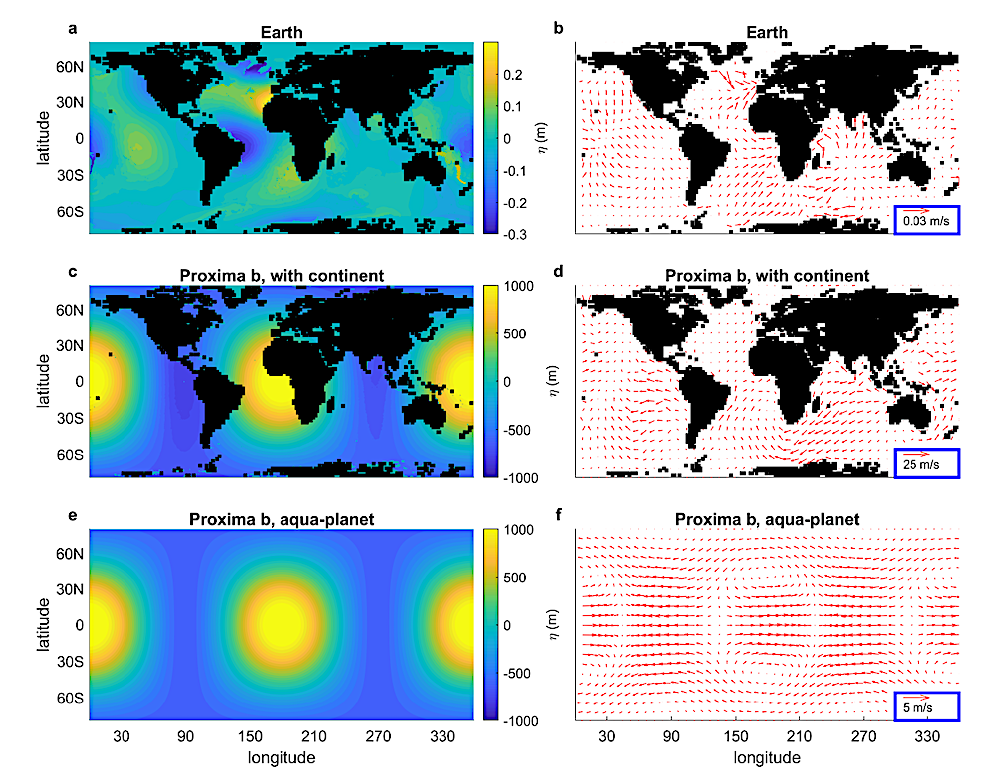
Snapshots of simulated tidal elevation (left) and tidal currents (right) on Earth and Proxima b. Land-ocean configurations of modern Earth (a-d) and an aqua-planet without any continent (e-f) are used. — astro-ph.EP
Jiaru Shi, Jun Yang, Dorian S. Abbot, Yonggang Liu, Wanying Kang, Yufeng Lin
Subjects: Earth and Planetary Astrophysics (astro-ph.EP)
Cite as: arXiv:2507.03850 [astro-ph.EP] (or arXiv:2507.03850v1 [astro-ph.EP] for this version)
https://doi.org/10.48550/arXiv.2507.03850
Focus to learn more
Submission history
From: Jiaru Shi
[v1] Sat, 5 Jul 2025 01:10:45 UTC (16,150 KB)
https://arxiv.org/abs/2507.03850
Astrobiology
Stay Informed With the Latest & Most Important News
Previous Post
Next Post
-
 01From Polymerization-Enabled Folding and Assembly to Chemical Evolution: Key Processes for Emergence of Functional Polymers in the Origin of Life
01From Polymerization-Enabled Folding and Assembly to Chemical Evolution: Key Processes for Emergence of Functional Polymers in the Origin of Life -
 02Panasonic Leica Summilux DG 15mm f/1.7 ASPH review
02Panasonic Leica Summilux DG 15mm f/1.7 ASPH review -
 03Two Black Holes Observed Circling Each Other for the First Time
03Two Black Holes Observed Circling Each Other for the First Time -
 04How New NASA, India Earth Satellite NISAR Will See Earth
04How New NASA, India Earth Satellite NISAR Will See Earth -
 05And Thus Begins A New Year For Life On Earth
05And Thus Begins A New Year For Life On Earth -
 06Astronomy Activation Ambassadors: A New Era
06Astronomy Activation Ambassadors: A New Era -
07SpaceX launch surge helps set new global launch record in 2024













